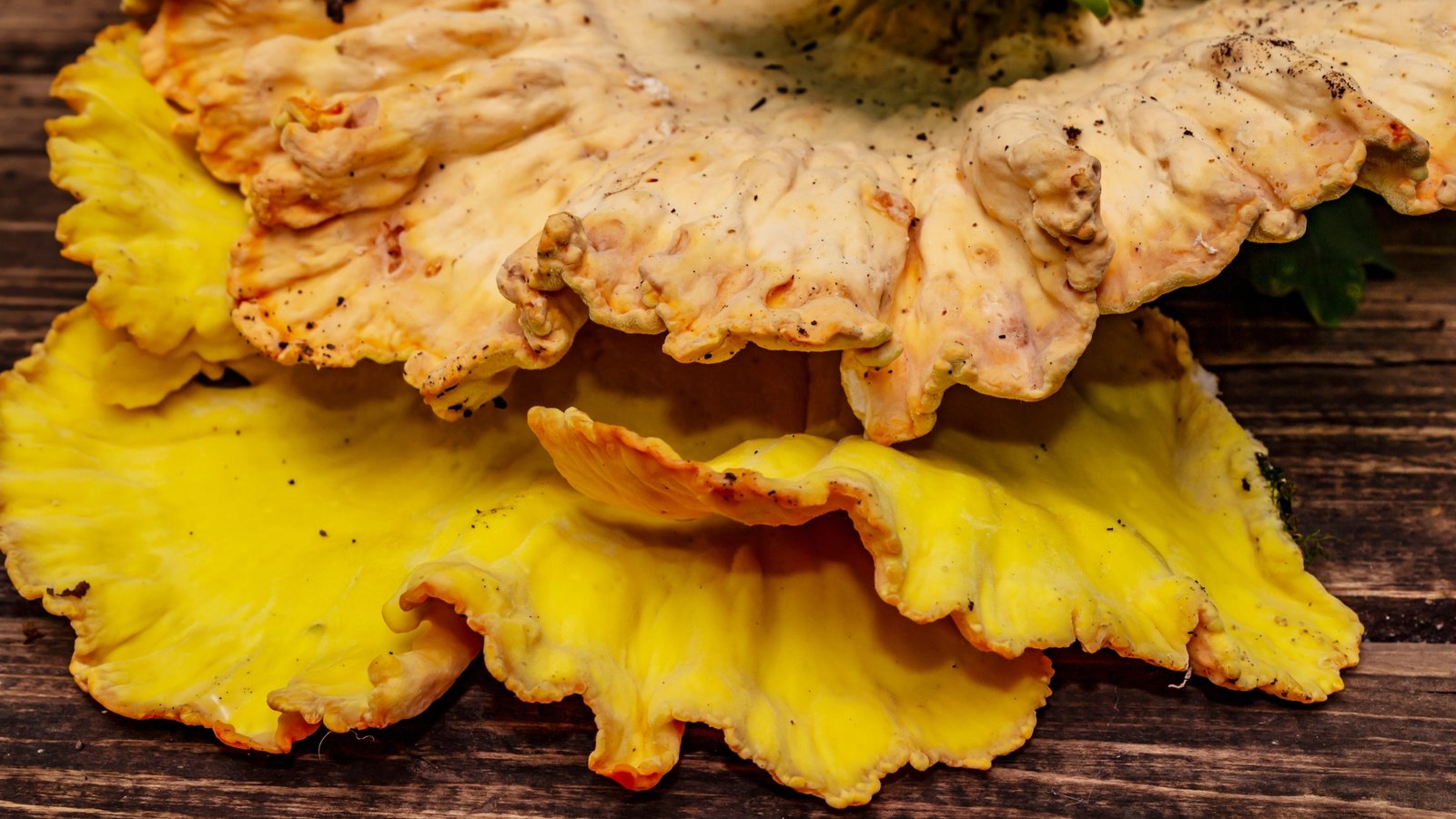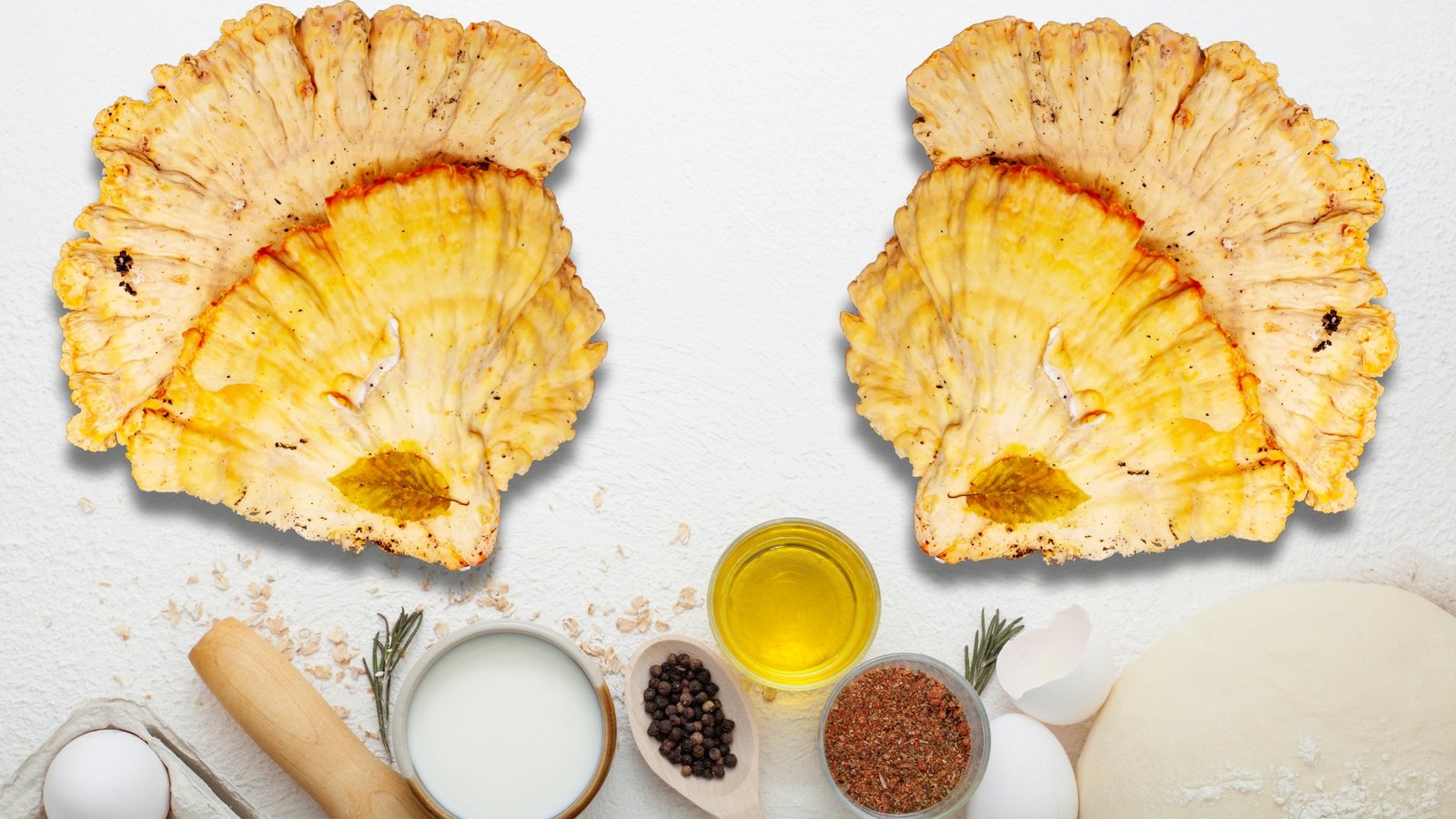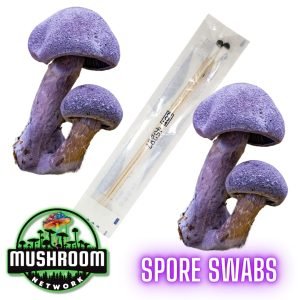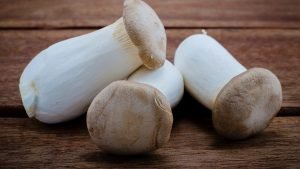The vibrant orange hues of the Chicken of the Woods mushroom aren’t its only allure; this fungal wonder, with a texture and taste reminiscent of chicken, has long been a culinary treasure for chefs and foragers alike.
With an uncanny resemblance in taste and texture to its poultry namesake, Chicken of the Woods (Laetiporus Sulphureus) has made a significant mark in gourmet circles. Not only is it a wild forager’s dream due to its unmistakable appearance and substantial yield, but it’s also been embraced by chefs for its versatility. Beyond the aesthetics and culinary appeal, however, lies a story of ecological balance and fungal wonder.

Ecological Role & Habitat:
- Forest Healer: Contrary to misconceptions, Chicken of the Woods is not a parasitic mushroom. It typically grows on dead or dying hardwoods, playing a vital role in breaking down the lignin in wood, thereby aiding forest regeneration.
- Identifiable and Plentiful: Its bright yellow-orange shelves are unmistakably vibrant against the brown backdrop of trees, making it a favorite for beginner foragers. When found, it often provides a bountiful harvest, sometimes weighing several pounds.
- Safety in Foraging: While it’s one of the safer mushrooms to identify, there are a few look-alikes, such as the Sulfur Shelf mushroom and the Jack-O-Lantern mushroom, which can be toxic. Always forage with an expert if you’re a beginner or consult detailed field guides.

Culinary Attributes:
- Taste & Texture: The mushroom’s younger parts are tender, juicy, and have a flavor profile that’s uncannily chicken-like. Its fibrous texture can be likened to cooked poultry, which is why many vegetarian and vegan recipes use it as a meat substitute.
- Versatility in Dishes: From stir-fries, pies, stews to grilling and frying, the Chicken of the Woods can seamlessly replace chicken in almost any recipe. Its mild flavor acts as a canvas, taking on the spices and sauces of varied cuisines.
- Nutritional Boon: Apart from being low in calories and fat, it’s a protein-rich food. It also contains essential vitamins and minerals, making it both a delicious and nutritious addition to meals.
The universe of mushrooms is expansive, each variant bearing its own unique charm and characteristics. The Marketplace on the 🍄 Mushroom Network is a testament to this diversity. It is a haven for those seeking a deeper understanding of the magical world of mushrooms. If you’re keen on learning more about this type of mushroom and other mushroom variants, this Marketplace is your ultimate resource.
Cooking Techniques:
- Sauteing: One of the simplest methods, sauteing in butter or oil with a pinch of salt, can bring out its inherent flavors. A dash of garlic and fresh herbs can elevate the taste further.
- Grilling: Marinated slices of this mushroom can be grilled, producing a smoky, meaty treat, perfect for summer barbecues.
- Slow Cooking: In dishes that require extended cooking times, like stews or curries, adding it towards the end preserves its texture and flavor.
Not sure where to start? The 🍄 Mushroom Academy offers a wide range of courses tailored to your needs. Whether you’re a beginner eager to learn or an experienced mycologist looking to broaden your knowledge, the 🍄 Academy has something for everyone.

Gastronomic Galore:
The culinary journey of the Chicken of the Woods is a testament to nature’s gastronomic marvels. As we’ve journeyed from its ecological significance to the table, it’s clear that this mushroom is more than just a forest find; it’s a culinary delight waiting to be savored.
Don’t forget to check out the 🍄 Mushroom Network’s Marketplace to see what’s available. But hurry, our shelves are constantly evolving, and you wouldn’t want to miss out on this wonderful mushroom. Join our growing network of Patrons, Genetics, and Mycologist Vendors only on the 🍄 Mushroom Network!
Recommended Reads:
The Sentient Spores: The Philosophy of Fungal Consciousness
What is consciousness? Philosophers, scientists, and thinkers have grappled with this question across epochs. Yet,...
Read More...King Oyster (Pleurotus Eryngii)
Scientific Name: Pleurotus Eryngii COMMON NAME(S): King Trumpet Mushroom | French Horn Mushroom | King...
Read More...Protected: ##################
There is no excerpt because this is a protected post.
Read More...Mushrooms to the Rescue: An Exploration of Psychedelic Fungi in Cluster Headache Treatment
Join us as we delve into the promising realm of psilocybin mushrooms and their potential...
Read More...Whoa there, Spore Sport! 🍄 Looks like you’re not logged in yet. Don’t you know what you’re missing? MYCO-CREDITS! Imagine all the fungal fun you could have. It’s like finding a Morel in May and not picking it. Tragic, right? Log In or Become a Myco-Patron and start racking up those credits. It’s more rewarding than finding a mushroom in your backyard! 🌟🏡












